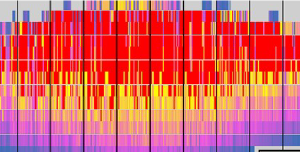
Dynamic solar shading has the potential to dramatically reduce the energy consumption in buildings while at the same time improving the thermal and visual comfort of its occupants. Many new typologies of shading systems that have appeared recently, but it is difficult to compare those new systems to existing typologies due to control algorithm being rule-based as opposed to performance driven. Since solar shading is a design problem, there is no single right answer. What is the metric to determine if a system has reached its optimal kinematic design? Shading solutions should come from a thorough iterative and comparative process. This paper provides an original and flexible framework for the design and performance optimization of dynamic shading systems based on interpolation of simulations and global minimization. The methodology departs from existing rule-based strategies and applies to existing and to complex shading systems with multiple degree-of-freedom mobility. The strategy for control is centered on meeting comfort targets for work plane illuminance while minimizing the energy needed to operate space. The energy demand for thermal comfort and work plane daylight quantity (illuminance) are evaluated with Radiance and EnergyPlus based on local weather data. Applied to a case study of three typologies of dynamic shading, the results of the methodology inform the usefulness and quality of each degree-of-freedom of the kinematic systems. The case study exemplifies the iterative benefits of the methodology by providing detailed analytics on the behavior of the shades. Designers of shading systems can use this framework to evaluate their design and compare them to existing shading systems. This allows creativity to be guided so that eventually building occupants benefit from the innovation in the field.